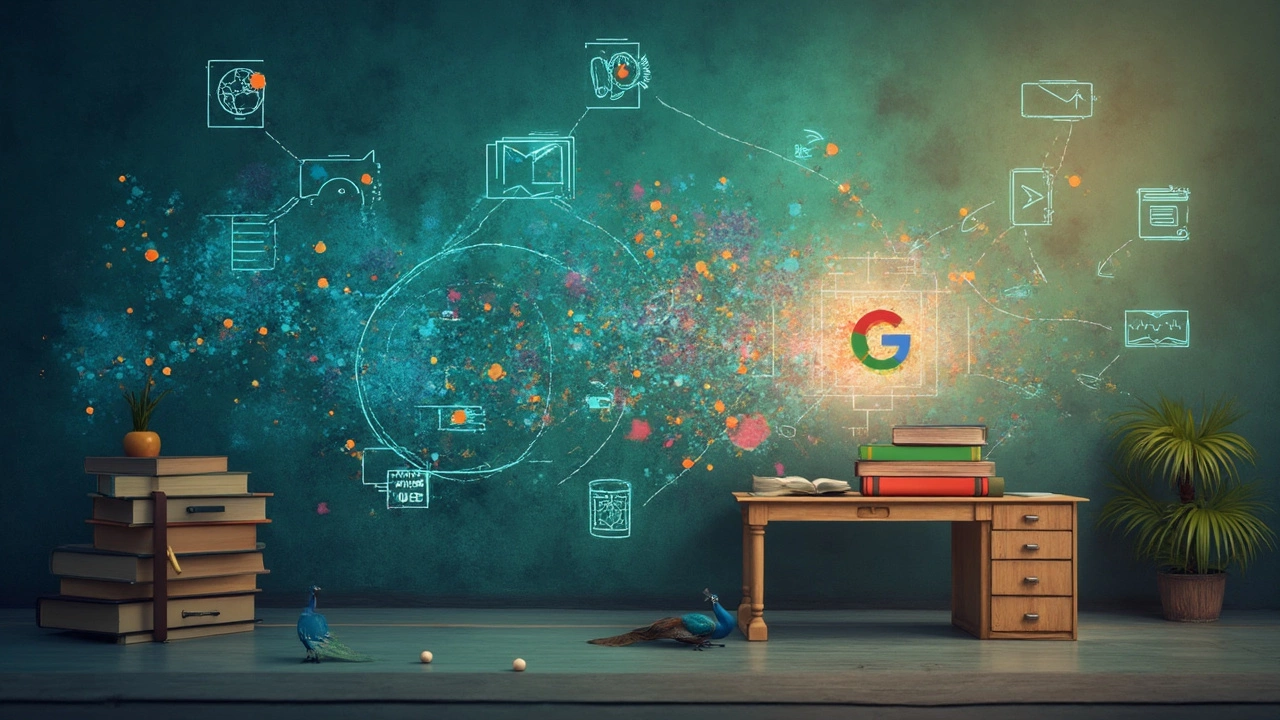Google Classroom isn't just another tool for teachers and students; it's a full-fledged digital platform that's reshaping how education works. For anyone who's been in school these past few years, it's probably become a staple in your daily academic life. So, what exactly makes it a platform and not just some online tool?
At its core, Google Classroom serves as a hub for educational interactions. Think of it like the central command center for all your learning activities—it pulls together resources, assignments, and communication into one neat package. This streamlines tasks, helping teachers distribute and grade assignments while allowing students to easily access their work and feedback. And because it's part of the Google family, it seamlessly integrates with tools like Docs, Drive, and more—making it not just convenient, but powerful. Want to know what else is cool about it? We’re diving deeper, so stick around.
- Understanding Google Classroom
- Features and Benefits
- Integration with Google Suite
- User Experience
- Future of Digital Learning
Understanding Google Classroom
Google Classroom might sound like just another app, but it's so much more than that. It's a digital platform that's taken online education by storm. Created by Google in 2014, its primary goal was to simplify creating, distributing, and grading assignments in a paperless way. Fast forward to today, and it's become a lifeline for many schools around the world.
Google Classroom is part of the Google Suite for Education, meaning it plays nicely with apps like Google Docs, Sheets, and Drive. You don't need to jump between different platforms; everything you need is right there. This integration makes handling educational tasks a breeze, saving time and reducing stress for teachers and students.
How Google Classroom Works
At its most basic level, Google Classroom works as a centralized space where teachers create 'classes.' Once set up, teachers can invite students or simply provide them with a code to join. After that, it’s a straightforward process of uploading assignments, sharing resources, and providing feedback.
- Teachers create and manage virtual classrooms.
- Students access and submit assignments through a simple dashboard.
- Real-time collaboration is possible through integrated tools like Google Docs.
- Grading is simplified with automatic ranking and feedback options.
Joining a class is straightforward too. Once you're in, that's where the magic begins. Assignments get posted all in one spot, no more hunting through emails or piles of paper.
Why Use Google Classroom?
One of the standout features of Google Classroom is its user-friendly design. There’s little hassle in learning how to use it since it's designed to be intuitive. And with all its features being part of the online education landscape, it's incredibly accessible. Teachers can post announcements, send private comments, and track student participation or performance with just a few clicks.
Stats suggest that around 150 million students, educators, and school leaders are using Google Classroom globally. Whether you're a student looking to keep track of your homework or a teacher trying to make grading less of a chore, Google Classroom has got you covered.
Features and Benefits
When it comes to Google Classroom, it's more than just an app you click on for schoolwork. It's packed with features that bring a lot of advantages to the table.
Accessibility and Convenience
One of the biggest perks? Accessibility. Whether you're accessing it from a laptop at home or your smartphone on the go, Google Classroom ensures you can tap into your coursework anytime, anywhere. This is huge for students and teachers dealing with busy schedules or remote learning situations.
Streamlined Assignment Management
Another cool feature is how it streamlines assignment management. Teachers can create and distribute assignments with just a few clicks, and students can submit their work just as easily. This cuts down on paper, organizes work in one place, and provides a clear deadline tracker. No more "lost homework" excuses!
Seamless Integration
Google Classroom integrates flawlessly with other Google Suite tools—Docs, Sheets, Slides, you name it. This means you can create a presentation in Slides, submit it directly in Classroom, and even get instant feedback, all within minutes. Talk about efficiency!
Collaborative Learning
It also fosters collaborative learning. Teachers can set up discussion questions and group projects, allowing students to interact within the platform. This encourages teamwork skills and keeps everyone engaged.
| Feature | Benefit |
|---|---|
| Assignment Management | Organizes all tasks digitally, reducing paper clutter |
| Integration | Works with Google Suite for enhanced functionality |
| Collaboration | Enhances teamwork through group projects and discussions |
At the end of the day, Google Classroom isn't just about handling coursework—it's about making that process smoother and more engaging. With the way e-learning is evolving, these features and benefits are game-changers.

Integration with Google Suite
One of the biggest draws of Google Classroom is how well it fits into the larger Google Suite family. This integration makes it more than just a standalone digital platform—it's like the whole Google ecosystem is right at your fingertips. If you've ever used Gmail, Docs, or Sheets, you're already halfway to mastering Classroom!
First up, collaboration. Google Docs and Classroom work hand-in-hand. On Classroom, teachers can attach a Doc to assignments, allowing students to collaboratively edit and submit work directly from the platform. No more juggling between emails and uploads. It's all one smooth flow.
Easy Communication
Thanks to Gmail, communication between teachers and students is a breeze. You get instant notifications about assignments, due dates, and feedback. It's like having a personal assistant who never sleeps. Changes in assignments or schedules? They’re just an email away.
File Management with Drive
Google Drive serves as the backbone for file management within Classroom. When an assignment is created, folders and files are automatically organized in Drive. This means you spend less time filing and more time focusing on what matters—learning. Plus, with the massive storage space, losing track of documents is a thing of the past.
- Docs & Classroom: For essays, group projects, and more!
- Sheets & Classroom: Perfect for those math or data science assignments.
- Slides & Classroom: Get creative with presentations without breaking a sweat.
Overall, the harmony between Google Classroom and Google Suite makes it more than just an e-learning platform; it's a full-fledged digital learning environment. Everything's connected, making the transition from traditional to digital education nearly seamless. That's the power of integration!
User Experience
When diving into Google Classroom, one of the first things you’ll notice is how intuitive the interface is. This ease of use is a game-changer for educators shifting their lessons online. Imagine setting up a new class in a few simple clicks. It's that straightforward. Teachers can post assignments, announcements, and resources with ease, managing it all from a dashboard that’s designed to be user-friendly.
Accessibility and Navigation
Students, whether tech-savvy or not, generally find the platform easy to navigate. They can access assignments, materials, and grades readily. The mobile app version is pretty slick too, allowing access anytime, anywhere—a real boon for students who are always on the move. And let’s not forget the language support; Google Classroom helps bridge the communication gap for non-native speakers, making it an inclusive learning environment.
The Role of Integration
A significant factor enhancing the user experience is its seamless integration with Google Suite tools. Need to collaborate on a Google Doc or fill a Sheet? No problem! It’s all part of the ecosystem. This integration means fewer headaches when uploading or sharing files and ensures everything is neatly organized in your Google Drive. It sounds like a small perk, but the time saved from not emailing files back and forth is huge.
Feedback Mechanisms
The platform encourages interactive communication between teachers and students. With instant feedback possible through comments and private notes, students can better understand their performance and areas for improvement. Teachers can even use rubrics to provide structured feedback, which students find incredibly helpful for understanding how they're graded.
| Statistic | Details |
|---|---|
| 65% | Teachers reported improved efficiency after integrating Google Classroom |
| 70 million+ | Users worldwide as reported in 2023 |
So, is Google Classroom just a digital platform? Given its focus on the user experience, it’s clear it’s much more than that. It's an ecosystem where teaching and learning meet seamlessly—making both parties' lives a whole lot easier.

Future of Digital Learning
It's no exaggeration to say that digital learning, with platforms like Google Classroom, is set to revolutionize education as we know it. As schools and educators become more comfortable with technology, we'll likely see it integrated even further into daily learning activities.
One trend to keep an eye on is personalized learning. With the wealth of data that platforms like Google Classroom collect, there's real potential for creating individualized learning paths for students. Imagine each student having a tailored curriculum that matches their learning speed and style—fashioning education in a way that's never been possible before.
Enhanced Interactivity
Interactivity in e-learning is bound for an upgrade. Technologies like augmented reality (AR) and virtual reality (VR) are slowly sneaking into classrooms, turning traditional lectures into immersive experiences. For example, a history lesson could transform into a virtual trip to ancient Rome, making learning both fun and impactful.
Increased Accessibility
The digital shift also brings education to people where it was previously inaccessible. Students in remote areas can access top-notch resources and expert educators through these platforms. It's leveling the educational playing field, opening doors to those who couldn't reach them before.
Future Technologies
The future is bright with innovations like artificial intelligence (AI) and machine learning starting to play roles in e-learning. These technologies not only help customize content but also improve administrative efficiency, freeing up more time for educators to focus on teaching.
With Google Classroom and similar e-learning platforms leading the charge, education is becoming more inclusive, engaging, and efficient. Schools worldwide are increasingly embracing these tools, setting the stage for an exciting evolution in how we learn.

Write a comment